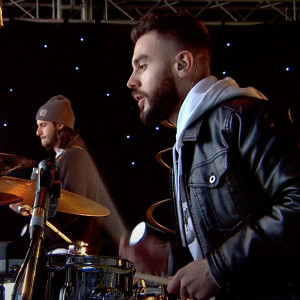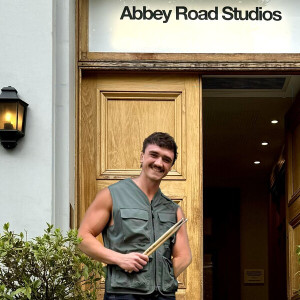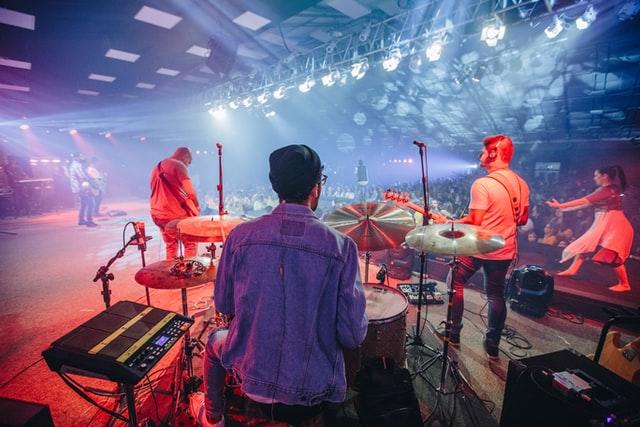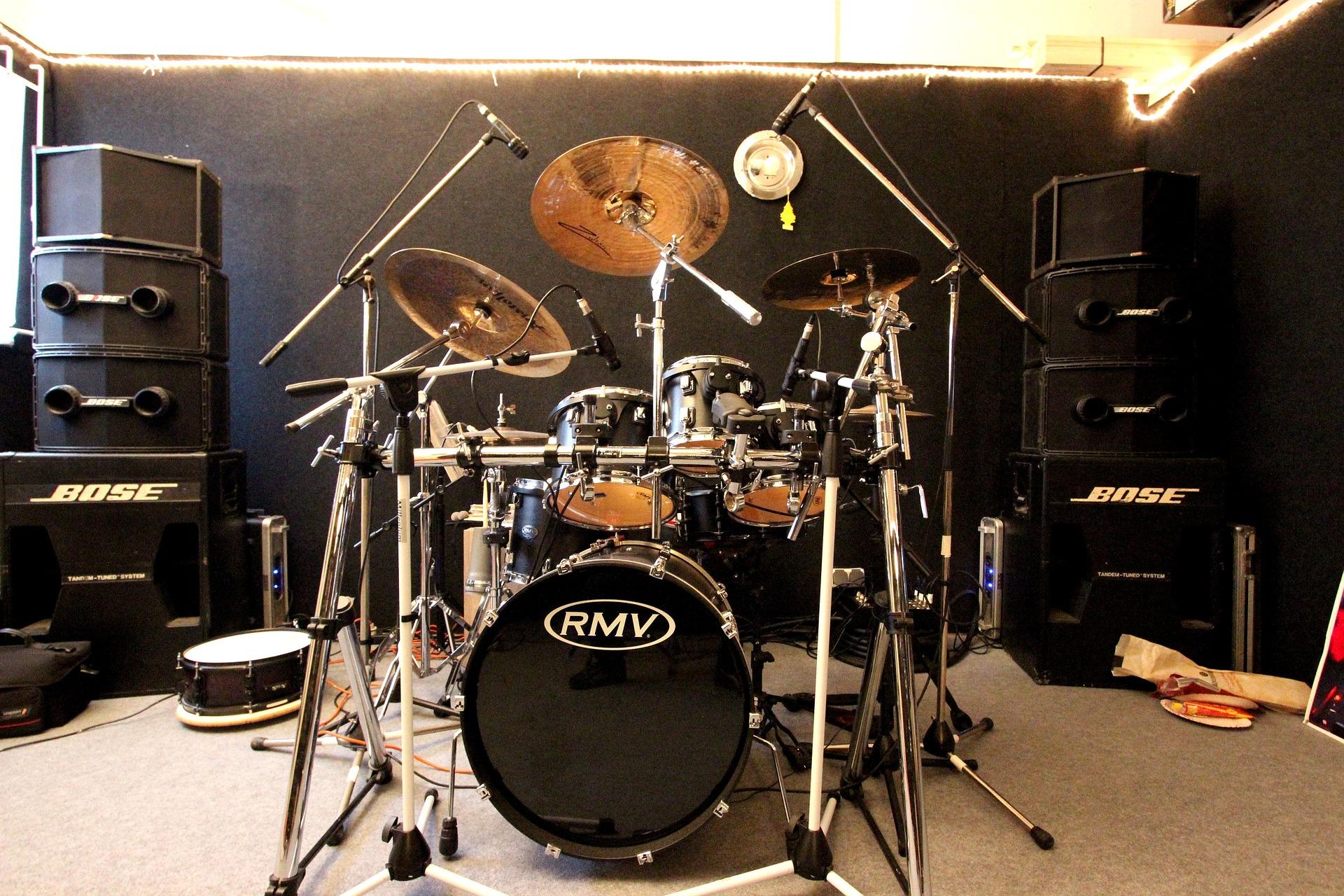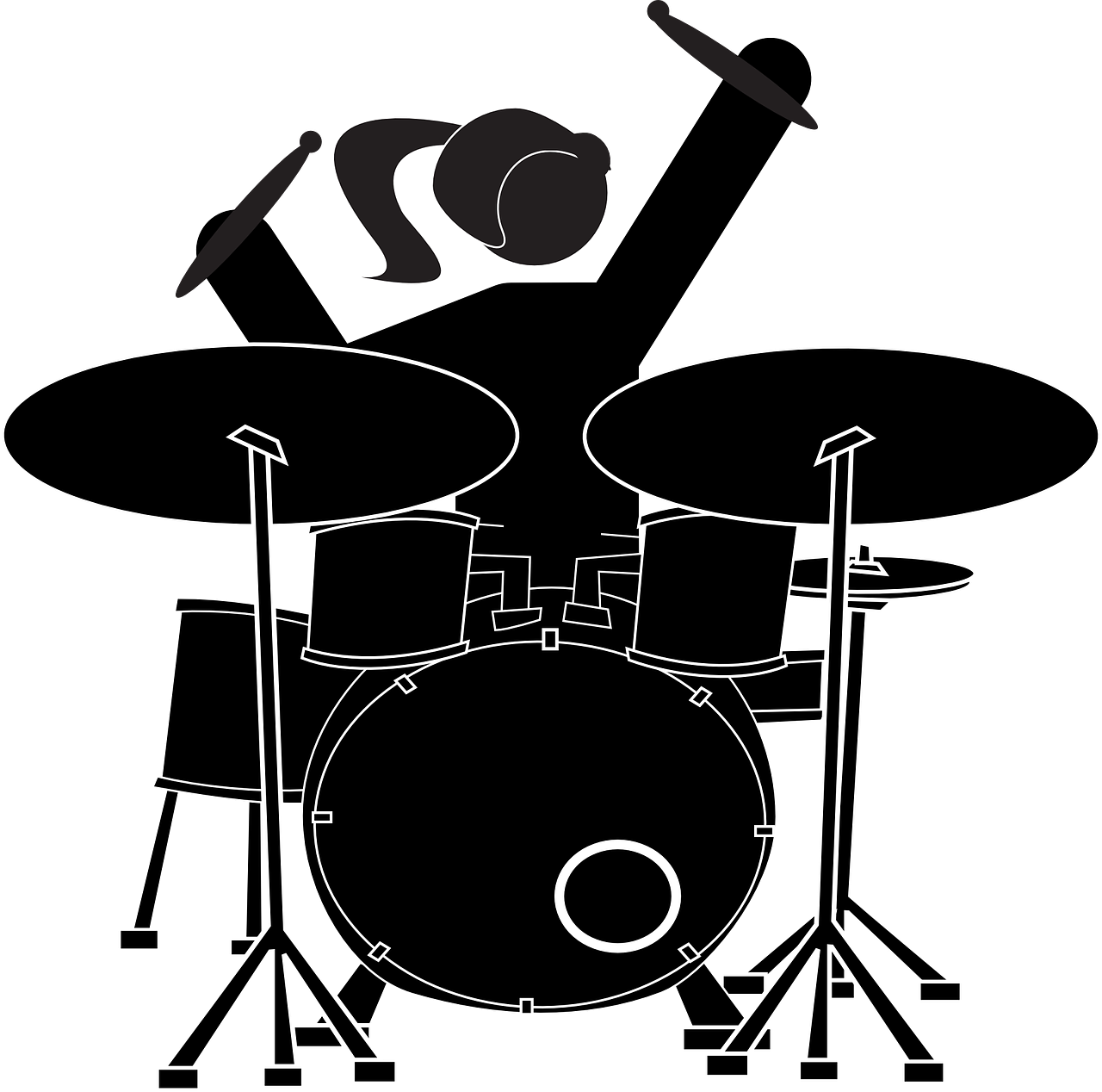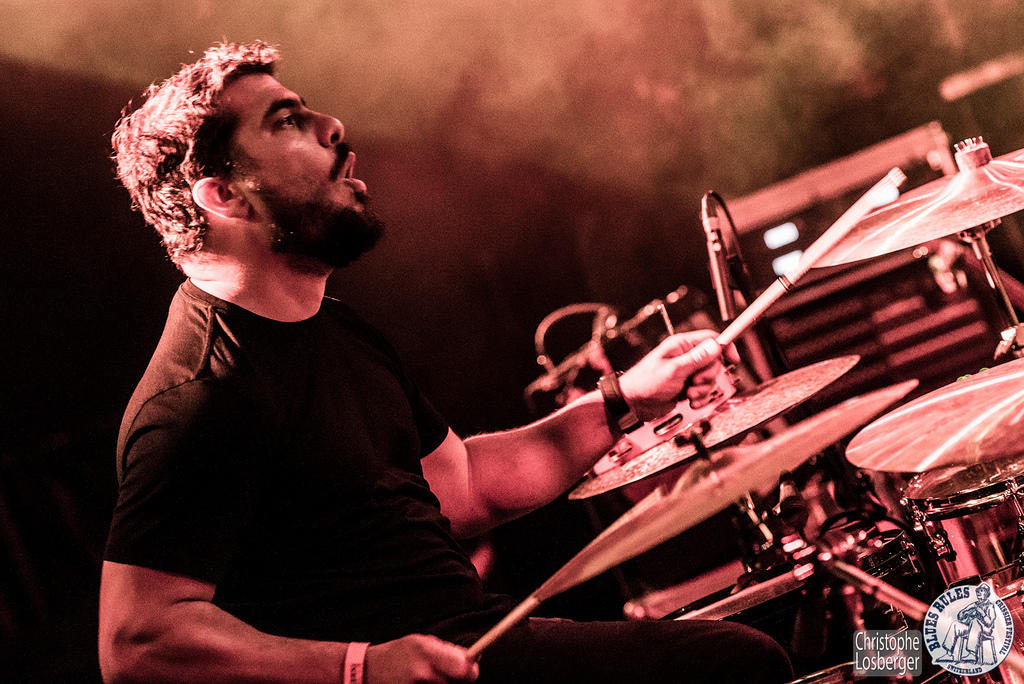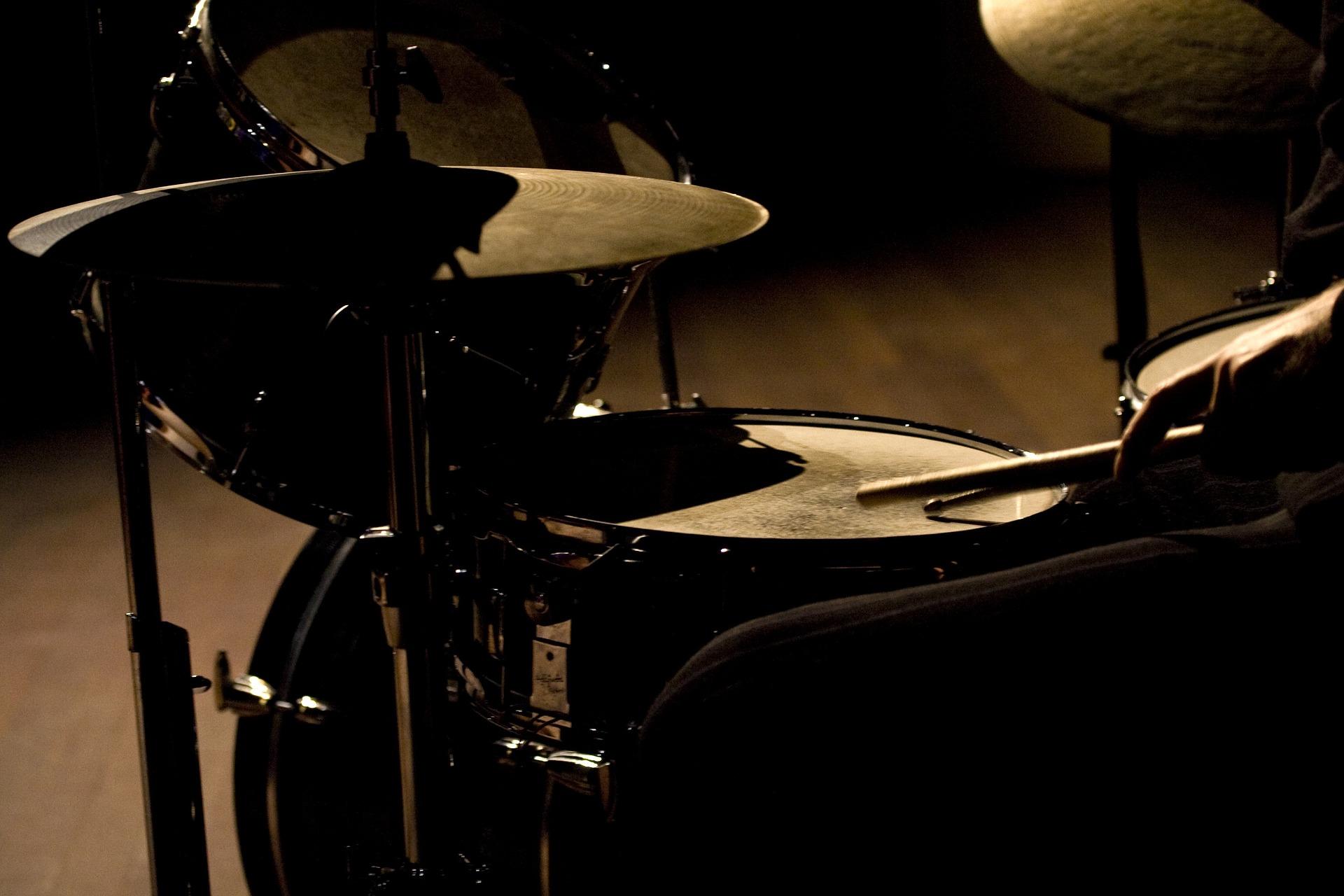“Music is the beat of a drum that keeps time with our emotions.”
― Shannon L. Alder
Researchers from McGill University in Montreal found that music has the ability to release the feel-good hormone, dopamine. They found that dopamine levels were 9% higher when people were listening to music that they liked.
What does all this mean? It means the music has been scientifically proven to help us relax! A truth has been proven throughout the history of drumming.
And what would music be without the powerful tones of percussion instruments; without the sound of cymbals, snare drums, bass drums and hi-hats?
Playing percussion instruments like the drums means leading the way for the electric guitar and the bass guitar. It is the drummer who provides the tempo and rhythm that the other musicians must follow. You may not learn about the theory of drumming through ordinary drum lessons, however, some drum lessons at musical institutions cover music theory too.
But where do acoustic drum kits originally come from? What is the history of this instrument?

History of the Drum Kit: Multicultural Roots
The very first instrument ever used in human history was, of course, the voice and the vocal chords, but we also know that percussion instruments found their way into existence not long after the initial creation of music. Here is a chronology of the history of the drum kit from prehistoric times right through to the 19th Century.
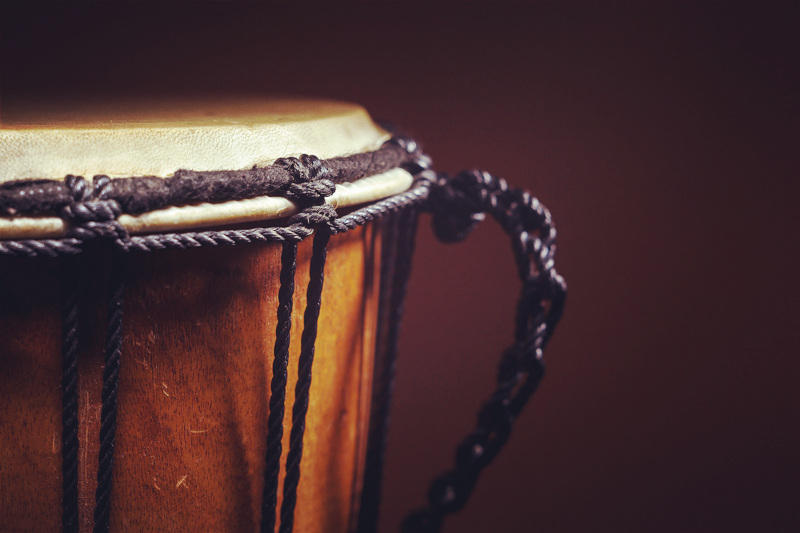
The First Traces of Percussion and Drums
Percussion instruments that make up the drum kit have an ancient multicultural history. The first traces of cymbals and drums date back to the 7th century BC. Sculptures and paintings of cymbals and drums were found in ancient tombs created by both the Romans and the Egyptians.
The word, tambourine, comes from the French word for drum, tambour, which itself has multicultural origins. The word is derived from the Persian word, tabῑr and the Arabic word, ṭubūl) whilst the same wood used for the snare drum is also found in Morrocan tambourines.
Drums can be found anywhere in the world and in very ancient cultures, which suggests these musical instruments have a very ancient history.
Cymbals were excavated from tombs of the ancient Greeks who believed they had the power to keep away evil spirits. What's more, a number of paintings also depict cymbals being used as musical instruments during banquets, feasts and parties.
Use of Percussion Instruments for Military Purposes
Later, drums and cymbals, like horns, foghorns, trumpets and bagpipes, were used by the army for military training and performances and even war. The aim was to communicate with and send orders to soldiers right at the end of the battlefield or to scare the enemy.
It was the Ottoman military bands who most memorably introduced the use of cymbals in order to make the enemy's' troops feel daunted.
This method of using percussion instruments was first properly established during the Golden Age and Napoleonic times. However, military fanfare parades can still be found taking place today.
The Arrival of New Orleans Style
A long while later, at the beginning of the 19th century, it was black slaves sent to North America who were to begin using the instrument. The movement took place in Louisiane when French military troops returned to their boats and headed back to France, leaving any of their musical instruments that were too heavy to carry behind.
Little by little, the brass bands and the New Orleans style based largely on improvisation begun to gain popularity. It was this style which would later develop into the Jazz that we now know and love!
Double drumming appeared actually as means of saving money and energy. Cymbals were attached to the bass drum and therefore only one musician was needed to play both at the same time. The African influences of double drumming are undeniable although they are difficult to trace as so much of it was passed down orally. What's more, American slaves were not permitted the right to play what they wanted whenever they wanted to.
History of Drumming: Invention of the Modern Drum in the 20th Century
At the beginning of the 20th century, not all drums were modern drums as we know them today.
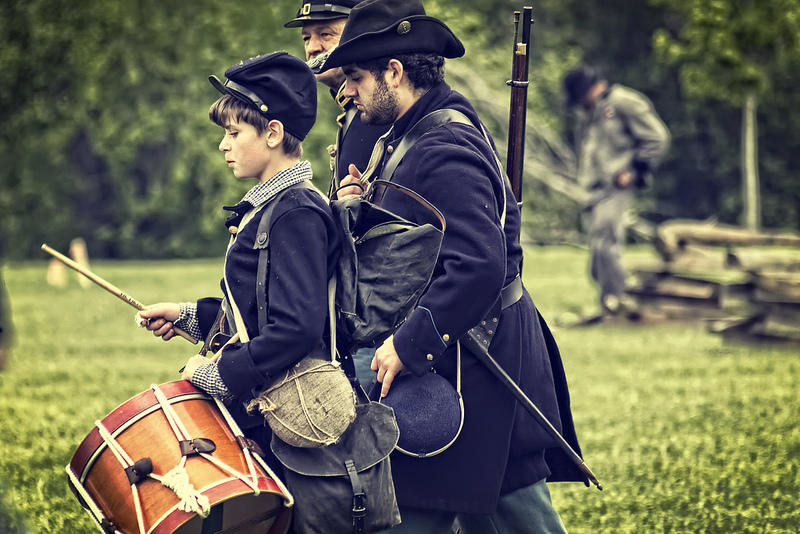
The Invention of the Bass Drum Pedal
Music groups and bands were originally made up of several drummers - or what we also refer to as percussionists - one for the bass drum, one for the snare drum and another for the cymbals.
In 1909, William F. Ludwig invented the Bass Drum Pedal (aka the toe-operated bass drum pedal), which greatly facilitated playing percussion instruments with a reduced number of percussionists. It was an instant success that became more and more commercialised in the year to follow.
At that time, drum skins were still made from animal skins and there was only one tone. The music style was directly influenced by military parades and the aim of the drums was to provide support to the jazz orchestras.
Prohibition and the Development of Jazz
In the 1920s, prohibition led to rich gangsters (who were largely of white European descent) becoming interested in big bands. Jazz clubs began to develop at the same time and were a place for consuming alcohol (a prohibited substance at the time) and dancing to the rhythm of pieces of improvised jazz music.
The drummer plays a very significant role as he must keep the tempo of the music. Drummers are rarely placed in the spotlight and recognised for their achievements like other instrumentalists, such as saxophonists, but usually, content themselves with keeping time by beating the bass drum.
The very first charleston pedal was invented, the first tunable drums began to see the light of day, as did sound-proof walls for limiting noise in enclosed spaces and the rest, as they say, is history!
Check out online drum lessons!
The Period of Swing
Jazz clubs began to multiply in the 1930s. The demand for jazz outlets began to increase, allowing black Americans and notably drummers, to find their place on the music scene at that time.
This was the beginning of the swing and would culminate in the swinging sixties that we know so well today. A note of silence added to the music that would give a ternary rhythm to the popular contemporary music of the time.
Tunable drums began to take prevalence and bass drums placed on the ground began to be part of American music more and more. With the arrival of splash cymbals, the modern drum kit began to rise considerably in popularity.
White Americans started to imitate black Americans and also turned their hands to jazz and swing music, playing in prestigious concert halls across the US.
At the same time in Paris, what is known as gypsy jazz also started to develop.
Looking for drum lessons for kids? Look no longer!
History of Drumming: The Evolution of Drum Music Since 1940
An important change occurred in the 1940's- music was being produced with the intention of being listened to in its own right and not just as a backdrop for dancing.
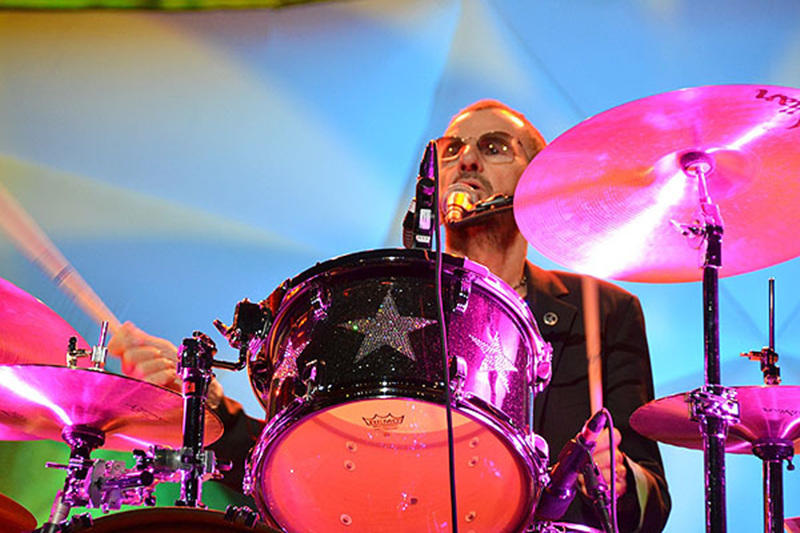
The Drummer, a Real Soloist with the Arrival of Be-bop
The drummer began to gain more and more solo roles more or less entirely thanks to the arrival of be-bop.
Be-bop is characterised by its very fast tempos and complex harmonies. Kenny Clarke is considered to be one of the first pioneers of this style of music. The role of the drummer took more and more prominence in this style of music as it allowed for rhythmic commentaries in certain phrases.
The accent becomes gradually lighter and the drum beats gradually smaller. The drummer is really able to express his own creativity.
At this time, manufacturers of musical instruments began making complete drum sets that looked very much like the modern drum kits that we know today.
Development of Rock 'n' Roll and Synthetic Drum Skins
In the 1950s, synthetic drum skins began to replace animal skins, which helped with tuning the drums to the needs of the drummer. Before 1957, all drums that were used in standard drum kits were originally made from deerskin.
The problem with these drums was that they often ended up needing to be tuned (which was not possible) and became easily damaged by environmental factors, such as the weather. If it was hot and humid, the tones of the drums came out as much lower, but if it was cold and dry, the drummers needed to moisten their drum skins in order to achieve the correct sound.
Yet despite their disadvantages, drum skins made from deer skin provided a very unique sound and tended to last a lot longer than plastic drum skins.
The 1950s and 60's also marked the beginning of rock’n’roll, which also made percussion instruments and in particular, the drums very popular among younger generations who would listen to bands such as the Beatles, Led Zeppelin and the Who.
Drumming and the skills of rock drummers became more and more powerful, inciting manufacturers to produce instruments that were increasingly reliable and solid. Cymbals became thicker and heavier in line with the needs of drummers.
Even though some drumming techniques did overlap (for example, jazz drumming techniques can also be identified in Elvis' rock 'n' roll), little by little, each music style began to pave the way for different unique drumming techniques and styles.
The Arrival of the Double Pedal in Hard Rock and Heavy Metal Music
Slowly but surely, hard rock music also gained popularity, with bands such as AC/DC, Deep Purple or even Guns’n’Roses bringing this kind of music to the forefront of the popular music scene. This music fad, in turn, evolved into other music styles, from punk (Sex Pistols, the Clash…) to progressive rock (David Bowie, Genesis…) and heavy metal and death metal music.
The double pedal appeared in the 1980s and is now almost always used by metal and death metal bands.
Nowadays, almost any new drum kit can be completely customised to the needs of the drummer and the style of music they intend to play. One could settle for a simple hi-hat, bass drum and snare drum or alternatively, it is also possible to exchange one's hi-hats for another type of cymbal, to add or remove drums or cymbals or to change the physical placement of the instruments (for example, if one is left-handed or if one wants to play with one's arms crossed over)
Electronic drumkits have naturally replaced certain other drums and drum kits - a process of natural musical selection you could call it! If you are trying to teach yourself the drums yourself in your own apartment then it would probably be better to use musical equipment such as a Roland. Trust me, the neighbours will thank you for it!
Have you already seen any drumming films?


Drum Culture: Who Are the Most Legendary Drummers?
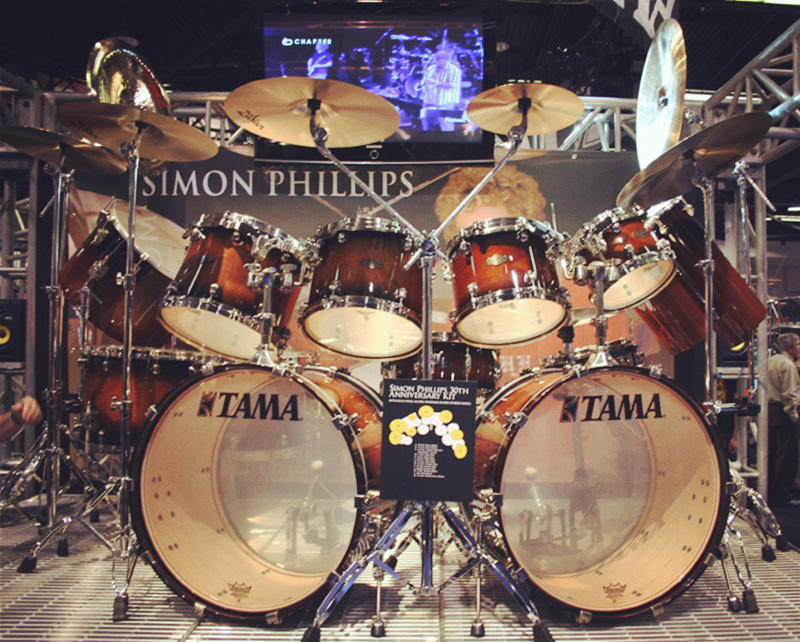
Jimi Hendrix, the infamous rock guitar virtuoso - probably almost anybody could think of him should the time come to name a guitarist on pub quiz night. But can the same be said of drummers, do they share the same level of celebrity?
Would you be able to name a legendary drummer who had made his mark as a percussionist in quite the same way?
Experts in the art of drum rolling, masters at giving powerful musical strikes great enough to make one startled to the core or moved to tears, drummers play an important role as musicians and many are actually just as well known as guitarists.
In fact, the magazine, Rolling Stones, published a list of the 100 Greatest Drummers of All Time. As with any of these kinds of lists though, those topping the list are not everyone's idea of the best of the best!
Let us begin with the pioneers of this fine musical instrument! Have you heard of Papa Joe Jones, Buddy Rich, Gene Krupa or even Art Blakey?
Buddy Rich actually had an incredible influence on modern drummers. The speed at which he was able to hit the drum, the way in which he was able to hold his left drumstick and his capacity for improvising drum solos when playing in a band were nothing less than astounding.
For my dad, a drummer since the age of 33, Buddy Rich is THE biggest drummer of all time and the only percussionist to still have quite such an influence on the modern drummers of today...
"He knows how to reel off drum rolls with just one hand. Look at his left hand - nothing moves apart from his fingers. And when he plays the hi-hats, he still able to give drum rolls with his left hand whilst keeping a regular tempo with his right hand."
In terms of more recent drummers, you will probably know of the drummer, Led Zeppelin. The drummer who gave his noble name to his band. However, John Bonham, was once almost just as famous and is exactly one of the most imitated drummers of all time.
When it comes to famous drummers, these famous names also spring to mind:
- Keith Moon from The Who,
- Joey Jordison from Slipknot,
- Dave Lombardo from Slayer,
- Travis Barker from Blink 182,
- Chad Smith from the Red Hot Chili Peppers,
- Ringo Starr from the Beatles,
- Ginger Baker from Cream,
- Stewart Copeland from The Police,
- Neil Peart from Rush,
- Lars Ulrich from Metallica…
What is the Most Amazing Drum Solo?
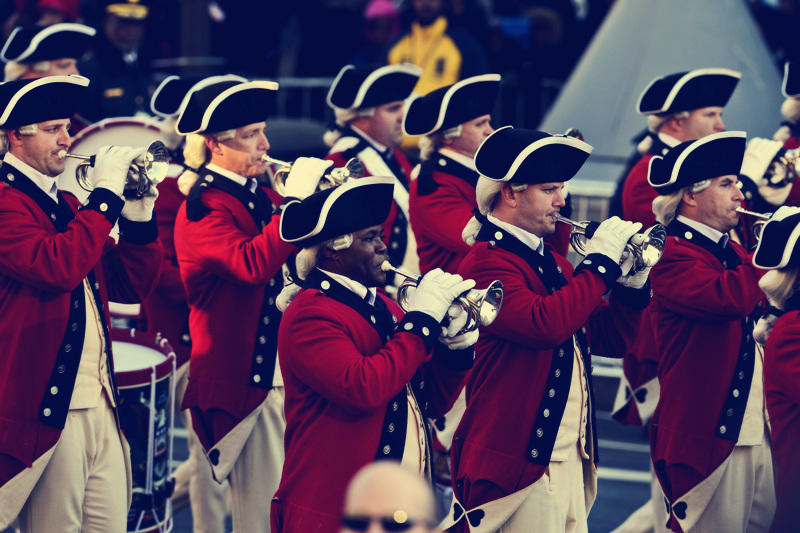
When starting out learning to play the drums, there are a few must-have pieces that should absolutely be a part of your drumming classes whether you are taking drum lessons near me at a professional music school or at home with a personal tutor.
Be warned, songs will probably not fall into the category of legendary drumming tunes! As the majority of the most famous drumming solos are so well-known due to the extremely high technical ability they command of the drummer.
Sounds, rhythm, groove... the beat of some of the legendary drum songs is far from the basic ternary rhythm of thousands of other songs.
Whatever the style of music, drums act as a marker for the other instruments. They really are rhythm in a box! The bass guitar, acoustic guitar, saxophone, trumpet or even the violin, no matter the instrument, they will all need to follow the beat of the drum or rather, the tempo set by the drums.
Seven Nation Army and We Will Rock You are some of the most emblematic and recognisable songs out there. In these classic tunes, it is the simple sound of the drums themselves that plays the main role in the success of the song. However, in many other pieces of music, what is so impressive is not actually the beat of the drums per se, but rather the ability of the drummer to improvise and to create amazing music through legendary drum solos or amazing lunar rhythms.
John Bonham gives an almost 15-minute-long drum solo in the piece, Moby Dick. He turns rock conventions on their head by introducing contretemps without ever playing one false note. And that is - as they say - a drumming legend perfecting the great art of drumming!
And what about Sunday Bloody Sunday? Without Larry Mullen Jr unforgettable drum roles, the tune would have absolutely no meaning at all. Thanks to Larry, even your great-grandma would be able to identify the song's intro in a matter of seconds!
There are a huge number of other songs out there, which would be nothing without the drums.
So get out of your tablature and start preparing to beat the best drummers out there!?
Drumming Movies
You can further explore the history of drums and drumming in movies.
Sadly, the drums - even though they play an extremely fundamental part in most musical pieces - often take a back seat when it comes to reaping any glory. Drummers are often seen sitting down, concealed behind a mirage of snare drums, bass drums, and hi-hats, modestly contenting themselves with keeping the beat of the music.
Drummers and their drum kits are often relegated to the background or even places to one side - they rarely see the spotlight like guitarists and solo singers do.
However, there are still some films out there that place the drummer and the drums at the forefront of the action.
This is true of the film, Whiplash. A real psychological drama, tainted with violence and manipulation, Whiplash introduces us to the daily life of a first-time drummer who finds himself face-to-face with a cruel and inflexible drum teacher.
If you are looking to improve your drumming skills, this film may not get you very far, but it does focus on learning the drums as a central theme and that can be quite motivating in itself!
OK, so just as a warning, the world of drumming is actually a lot more relaxed than what you would think from watching the film!
If you like biopics, then you would also do well to learn more about drumming through Gene Krupa and the film about him, The Gene Krupa Story. The film takes you right to the heart of Gene Krupa's life as a jazz drummer. Thanks to some incredible and down-right moving on-screen performances, your emotions will probably go up and down as much as his life rises and falls as he gains success as a jazz musician only to succumb to the clutches of drug and alcohol dependence.
Although somewhat romanticised in parts, the film does still remain fairly true to the real Gene Krupa and his life. In particular, the way it portrays his dilemma in not knowing whether to follow his heart and further his passion for music or to honour the memory of his father and his last wishes.
Finally, if you are looking to find one last glimpse of drumming culture on screen that deals with the drums in an entertaining way, but does not entirely focus on them, then you will need to watch Spinal Tap! This faux documentary recreates all the classic cliches of rock groups in such a realistic way that it is quite a struggle to untangle what is real and what is not.
However, don't wait for cinema to help you improve your drumming technique, just see them as a nice entertaining distraction rather than the be-all and end-all of learning to drum!
Definitions - History of the Drum Kit
When learning to play the drums, what is almost as important as learning to use rhythm and rhythmical techniques is to become familiar with a whole new set of vocabulary ( a specific musical vocabulary for percussionists).
What is a Splash Cymbal?
Splash cymbals are both accent cymbals and effect cymbals, they range in size from large to small, however, most are approximately between 6 and 12 inches. Splash cymbals are mainly used for small accents, usually after a break in a phrase. The sound they make is quite intense but does not last long.
What are Hi-Hats on a Drum Kit?
Known as Charleston in French, hi-hats are a crucial element of modern-day drum kits. Hi-hats are made of two cymbals placed on top of each other and played by touching one's foot on the pedal.
What is a Pause?
In English pause means to stop for a short while. And in fact, in music, it means exactly that. A pause is a break in the rhythm - a chance where the drummer can relax for a short while before carrying on!
What is a Chorus?
A chorus is usually the refrain of a song that follows a verse and is generally composed of one or two repetitive phrases that make it easy for the listener to remember. In jazz music, the chorus is usually the part for soloists, so listen out for drum solos during the chorus next time you tune into Jazz FM!
The drums have certainly evolved as an instrument over the years, and if you're inspired to learn, search for "drum lessons near me" now and start drumming with a tutor.










